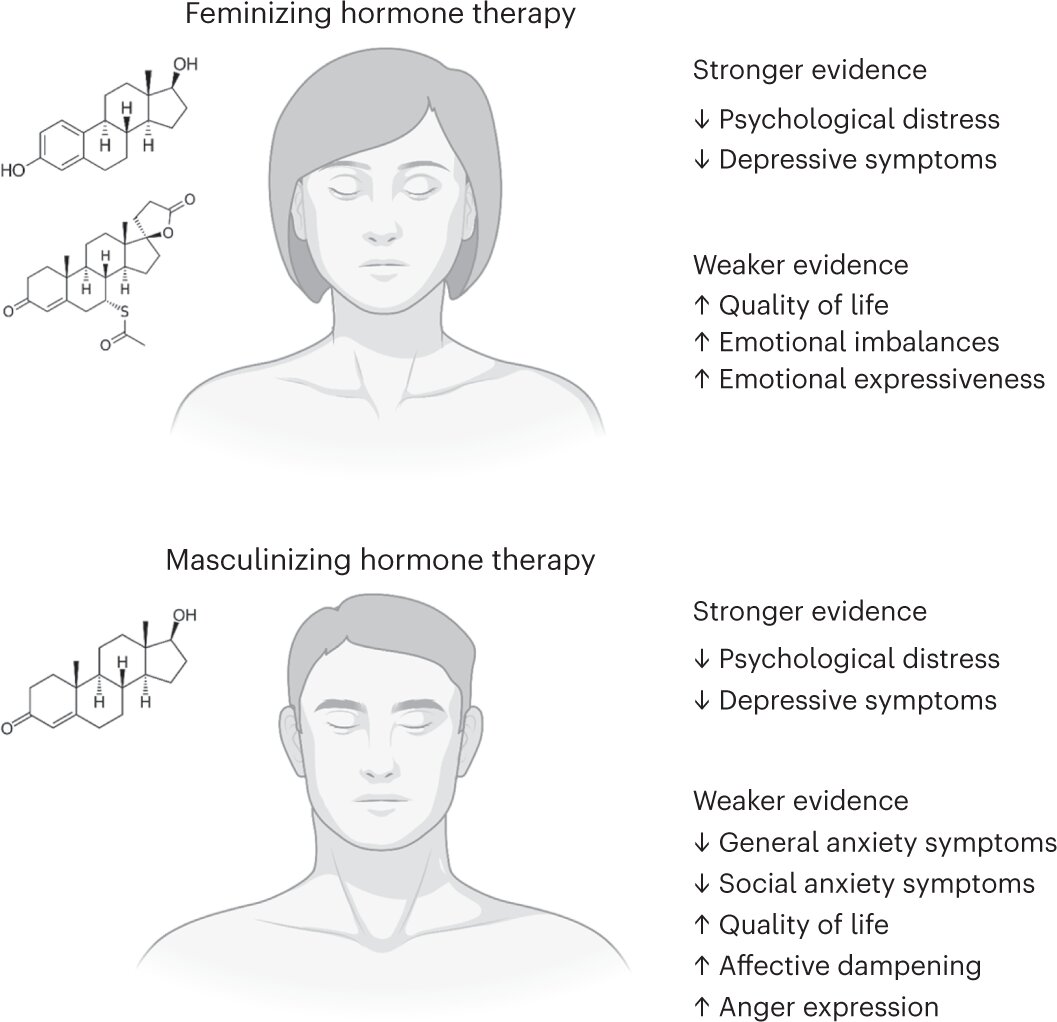Psychological distress and its association with gender, socioeconomic status, education and health conditions – Nature

Report on Psychological Distress and its Association with Sustainable Development Goals
Introduction: Aligning Mental Health Research with the 2030 Agenda
This report analyzes the determinants of psychological distress within the framework of the United Nations Sustainable Development Goals (SDGs). Addressing psychological distress is fundamental to achieving SDG 3 (Good Health and Well-being), particularly Target 3.4, which aims to promote mental health. However, progress on SDG 3 is intrinsically linked to other goals. This study investigates the interplay between psychological distress and factors central to SDG 1 (No Poverty), SDG 4 (Quality Education), SDG 5 (Gender Equality), and SDG 10 (Reduced Inequalities). By examining data from a specific cohort, this report highlights how socioeconomic status, educational attainment, gender, and pre-existing health conditions create intersecting disparities that must be addressed to achieve a sustainable and equitable future for all.
Methodology
This analysis utilizes cross-sectional data from the Ravanser Non-Communicable Disease (RaNCD) cohort study, which focuses on the Kurdish population aged 35 to 65 in Ravanser, Iran. A random sample of 3,015 participants was assessed seven years post-recruitment.
- Psychological Distress: Measured using the Kessler Psychological Distress Scale (K10).
- Socioeconomic Status (SES): Determined via principal component analysis (PCA) of assets, housing, and education, with participants categorized into quintiles.
- Statistical Analysis: Multivariable linear regression models were employed to assess the associations between gender, SES, education, and psychological distress, adjusting for covariates such as age, BMI, physical activity, and chronic diseases.
Key Findings: An Analysis Through the Lens of the SDGs
Disparities in Health and Well-being (SDG 3)
The study reveals significant variations in psychological distress, underscoring challenges to achieving universal mental health and well-being as outlined in SDG 3. Individuals with existing non-communicable diseases reported substantially higher distress levels, demonstrating the critical link between physical and mental health.
- Participants with cardiovascular disease had a mean distress score of 20.92, compared to 18.54 for those without.
- Individuals with a history of depression reported markedly higher distress (24.82) than those without (18.76).
- Obese participants showed higher distress levels (19.90) compared to those with normal weight (18.99), linking physical health status directly to mental well-being.
Gender Inequality and Mental Health (SDG 5 & SDG 3)
The findings highlight a significant gender gap in mental health, a critical concern for SDG 5 (Gender Equality). Women reported significantly higher levels of psychological distress than men, indicating that gender-based social and economic factors disproportionately affect female well-being.
- The mean distress score for females was 20.56, while for males it was 17.41.
- This disparity suggests that achieving gender equality is a prerequisite for ensuring good health and well-being for all, directly linking the progress of SDG 5 to the success of SDG 3.
Poverty, Inequality, and Psychological Distress (SDG 1 & SDG 10)
A strong correlation was found between socioeconomic status and psychological distress, illustrating the profound impact of poverty and inequality on mental health. This directly relates to SDG 1 (No Poverty) and SDG 10 (Reduced Inequalities).
- Individuals in the poorest quintile reported the highest mean distress score (20.52).
- Conversely, those in the wealthiest quintile reported the lowest mean distress score (16.84).
- This gradient demonstrates that economic disadvantage is a significant stressor that undermines mental health, making poverty alleviation and the reduction of inequalities essential strategies for public health.
The Protective Role of Quality Education (SDG 4)
The data confirms that education is a key determinant of mental well-being, reinforcing the importance of SDG 4 (Quality Education) as a foundation for a healthy life. Lower educational attainment was consistently associated with higher levels of psychological distress.
- Illiterate individuals had the highest mean distress score (19.98).
- Individuals with postgraduate education reported the lowest mean distress score (17.43).
- This finding underscores that equitable and inclusive education provides individuals with greater resources to navigate life’s stressors, thereby contributing to better mental health outcomes and advancing SDG 3.
Conclusion and Policy Recommendations for SDG Attainment
The evidence demonstrates that psychological distress is not merely a health issue but a development challenge rooted in gender inequality, poverty, and lack of education. The interconnected nature of these factors requires an integrated policy approach to make meaningful progress on the 2030 Agenda. To effectively reduce mental health disparities and advance the SDGs, the following actions are recommended:
- Integrate Mental Health into Broader Development Strategies: To advance SDG 3, policymakers must recognize that mental health is influenced by progress on SDG 1, SDG 4, SDG 5, and SDG 10. Mental health support should be a component of poverty reduction and education programs.
- Develop Gender-Responsive Mental Health Services: In line with SDG 5, interventions must be tailored to address the unique stressors and barriers faced by women. This includes providing accessible mental health services and addressing the socio-cultural factors that contribute to higher distress among women.
- Target Socioeconomically Disadvantaged Populations: To support SDG 1 and SDG 10, mental health care must be made accessible and affordable in low-income and marginalized communities, such as the one studied. Community-based mental health initiatives can help reduce barriers to care.
- Promote Mental Health Literacy through Education: To leverage the protective power of education (SDG 4), mental health literacy should be integrated into school curricula and adult learning programs. This can reduce stigma and equip individuals with coping mechanisms.
Analysis of Sustainable Development Goals in the Article
1. Which SDGs are addressed or connected to the issues highlighted in the article?
The article on psychological distress and its association with various demographic factors addresses several Sustainable Development Goals (SDGs). The analysis reveals connections to the following goals:
- SDG 3: Good Health and Well-being: This is the primary SDG addressed, as the article’s central focus is on psychological distress, mental health, and its links to non-communicable diseases like cardiovascular disease and health conditions like obesity.
- SDG 4: Quality Education: The study explicitly identifies a strong inverse relationship between education level and psychological distress, highlighting education’s role as a protective factor for mental well-being.
- SDG 5: Gender Equality: A key finding of the article is the significant disparity in psychological distress between males and females, with the discussion pointing to gender roles and societal pressures as contributing factors.
- SDG 10: Reduced Inequalities: The research is fundamentally about inequality. It examines how mental health outcomes are unequally distributed across different socioeconomic statuses, genders, and ethnic groups (specifically the Kurdish population).
2. What specific targets under those SDGs can be identified based on the article’s content?
Based on the issues discussed, the following specific targets are relevant:
-
Under SDG 3 (Good Health and Well-being):
- Target 3.4: “By 2030, reduce by one third premature mortality from non-communicable diseases through prevention and treatment and promote mental health and well-being.”
Explanation: The article directly supports this target by investigating psychological distress (mental health) and its association with non-communicable diseases. It states, “individuals with cardiovascular disease (20.92 ± 8.75) … exhibited significantly higher psychological distress levels.” It also notes that distress is linked to “premature mortality.” The study’s overall goal is to inform interventions that promote mental well-being. - Target 3.8: “Achieve universal health coverage, including financial risk protection, access to quality essential health-care services…”
Explanation: The article implies a connection to this target by highlighting how socioeconomic status affects mental health. It notes that “socio-economic disparities may be further exacerbated by limited mental health services in lower-income regions,” suggesting that a lack of access to quality healthcare contributes to the problem.
- Target 3.4: “By 2030, reduce by one third premature mortality from non-communicable diseases through prevention and treatment and promote mental health and well-being.”
-
Under SDG 4 (Quality Education):
- Target 4.5: “By 2030, eliminate gender disparities in education and ensure equal access to all levels of education and vocational training for the vulnerable…”
Explanation: The article demonstrates the importance of this target by showing that “illiterate individuals experiencing higher psychological distress (19.98 ± 8.42) compared to those with postgraduate education (17.43 ± 7.18).” The conclusion reinforces this by recommending the integration of “mental health education into school curricula and adult learning programs” to help vulnerable groups.
- Target 4.5: “By 2030, eliminate gender disparities in education and ensure equal access to all levels of education and vocational training for the vulnerable…”
-
Under SDG 5 (Gender Equality):
- Target 5.1: “End all forms of discrimination against all women and girls everywhere.”
Explanation: The study’s finding of “higher psychological distress levels in females (20.56 ± 8.58) compared to males (17.41 ± 7.22)” is presented as a consequence of systemic issues. The discussion suggests this gap may be “exacerbated by traditional gender roles, cultural expectations of women, and the disproportionate burden of caregiving,” which are forms of discrimination affecting well-being.
- Target 5.1: “End all forms of discrimination against all women and girls everywhere.”
-
Under SDG 10 (Reduced Inequalities):
- Target 10.2: “By 2030, empower and promote the social, economic and political inclusion of all, irrespective of age, sex, … ethnicity, … or economic or other status.”
Explanation: The article’s core analysis is about inequality based on sex, economic status (SES), and ethnicity (the Kurdish population). It finds a “strong association with socioeconomic status, where poorer individuals reported greater psychological distress.” By identifying these disparities, the study calls for targeted interventions to support these specific groups, aligning with the goal of inclusion.
- Target 10.2: “By 2030, empower and promote the social, economic and political inclusion of all, irrespective of age, sex, … ethnicity, … or economic or other status.”
3. Are there any indicators mentioned or implied in the article that can be used to measure progress towards the identified targets?
The article mentions or implies several indicators that can measure progress:
-
For Target 3.4 (Promote mental health and reduce NCD mortality):
- Prevalence/level of psychological distress: The primary metric used in the study is the Kessler Psychological Distress Scale (K10) score. The mean scores for different groups (e.g., “females reported higher levels of distress… with mean scores of 20.56 ± 8.58”) serve as a direct indicator of mental well-being in the population.
- Mortality rate from non-communicable diseases: The article explicitly links psychological distress to higher mortality from conditions like cardiovascular disease, mentioning that “adults experiencing psychological distress are nearly twice as likely to face mortality.” This aligns with indicator 3.4.1.
-
For Target 4.5 (Eliminate disparities in education):
- Disparity in health outcomes by education level: The article provides a clear indicator of inequality by comparing the mean psychological distress scores of individuals based on their education (“illiterate individuals experiencing higher psychological distress (19.98 ± 8.42) compared to those with postgraduate education (17.43 ± 7.18)”). Reducing this gap would indicate progress.
-
For Target 5.1 (End discrimination against women):
- Gender disparity in psychological distress: The difference in mean K10 scores between females (20.56) and males (17.41) is a quantifiable indicator of a gender-based inequality in health outcomes. Tracking this gap over time would measure progress toward gender equality in well-being.
-
For Target 10.2 (Reduce inequalities):
- Disparity in health outcomes by socioeconomic status: The article uses SES quintiles and reports that “poorer individuals reported greater psychological distress (20.52 ± 8.89) than their wealthier counterparts (16.84 ± 6.79).” This difference is a direct indicator of health inequality based on economic status.
- Health outcomes for specific ethnic groups: The study’s focus on the “Kurdish population” and its unique challenges provides a framework for using health metrics (like psychological distress levels) as an indicator for the well-being and inclusion of ethnic minorities.
4. Summary Table of SDGs, Targets, and Indicators
| SDGs | Targets | Indicators |
|---|---|---|
| SDG 3: Good Health and Well-being | 3.4: Reduce premature mortality from non-communicable diseases and promote mental health and well-being. |
|
| SDG 4: Quality Education | 4.5: Eliminate gender disparities in education and ensure equal access for the vulnerable. |
|
| SDG 5: Gender Equality | 5.1: End all forms of discrimination against all women and girls. |
|
| SDG 10: Reduced Inequalities | 10.2: Empower and promote the social and economic inclusion of all, irrespective of sex, ethnicity, or economic status. |
|
Source: nature.com

What is Your Reaction?
 Like
0
Like
0
 Dislike
0
Dislike
0
 Love
0
Love
0
 Funny
0
Funny
0
 Angry
0
Angry
0
 Sad
0
Sad
0
 Wow
0
Wow
0
































_1.png?#)












































